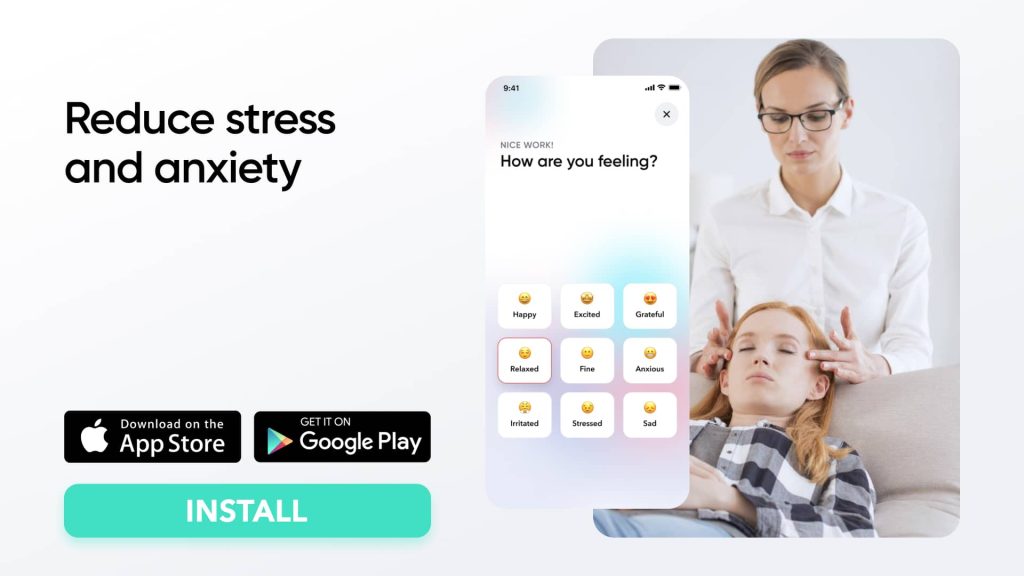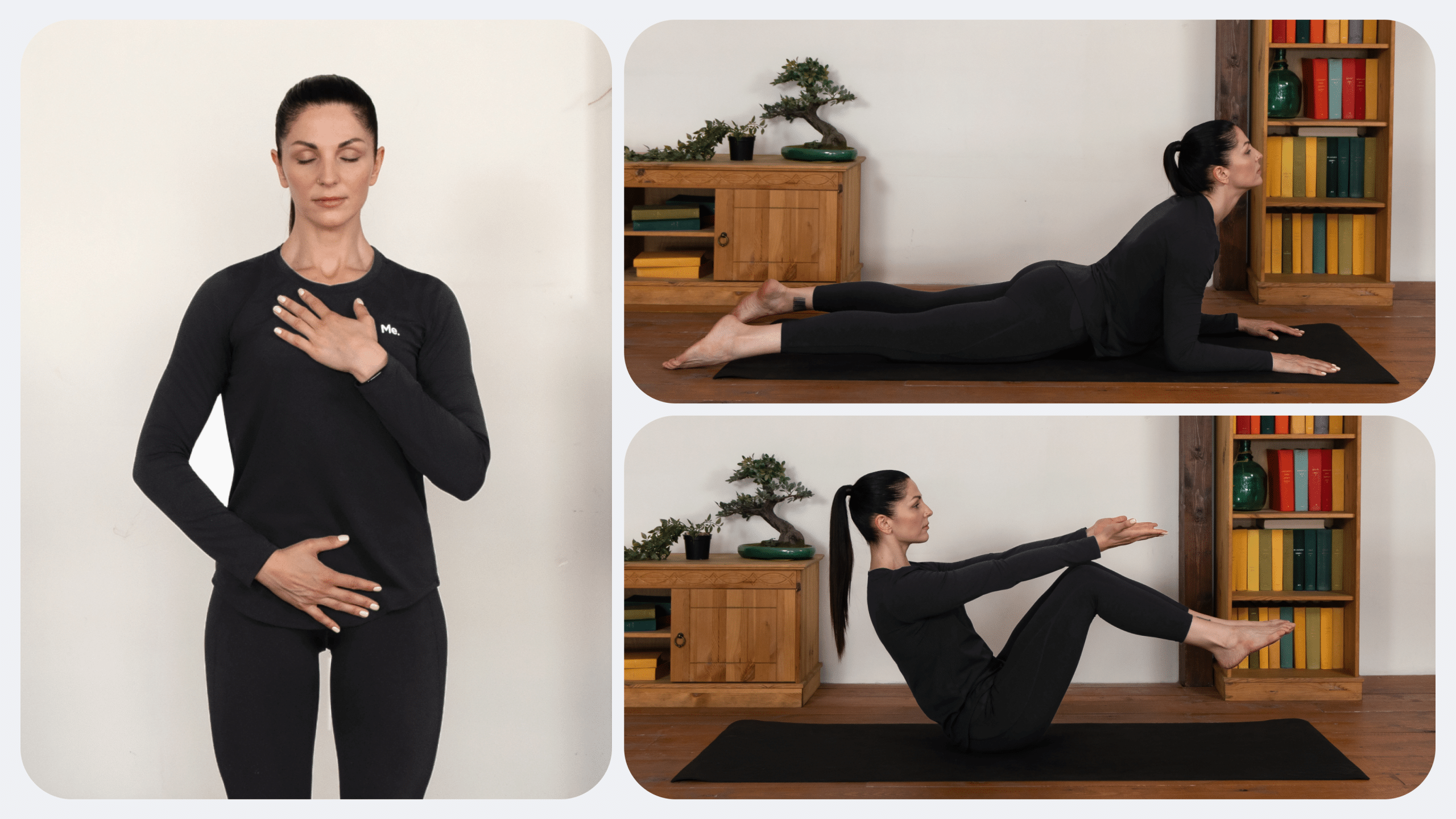Have you ever been in the middle of freaking out when suddenly after someone told you to take a deep breath and you did it, you felt better? You felt all (if not most) of the anxious energy leave your body, feeling much calmer than before? If you have, then you’d be surprised to know that in some way, you have taken part in one of the oldest wellness practices known as breathwork. If you are interested in learning more about this age-old breathing exercise, then today’s article is for you. Stick around to learn more about its origins, how to do it, the benefits of breath work, find the answer to “why is breathwork important?” and much more.
What Is Breathwork?
Before delving into the benefits of breathwork, we should first understand what this practice is and its origins.
Breathwork is a term that encompasses a large group of different breathing exercises or techniques. These exercises and techniques are often used to improve not only the mental health of the practitioners, but also their physical health and general wellbeing.
Please note that, although these breathing exercises are usually seen in yoga or meditation classes/videos, breathwork is often done outside of these classes.
That aside, we know that breathwork is an ancient ritual whose roots can be found in India. This practice is now used in many Western countries and originated from Pranayama, a yogic practice that focuses on breath (20). In Sanskrit, pranayama is said to mean “controlling the breath” and supposedly has over 50 techniques all meant to deal with a specific issue. According to WebMD, ancient practitioners of these techniques believed that you could control your mind/inner force (aka prana) and detoxify your body through simply regulating your breathing.
A pranayama cycle has three phases namely:
- Puraka, or inhalation
- Kumbhaka, or retention where you hold the breath you just took
- Rechaka, or exhalation
Some types of pranayama techniques that you might come across as you consider picking up this practice include (11)
- Bhramari Pranayama – Described as a vibrating, buzzing, and constant sound of bumblebees produced while exhaling strictly through the nasal airways, this technique is said to produce a sense of peacefulness to those who practiced it.
- Mukh Bhastrika – Described as having the breath actively blasted out in multiple “whooshes” with forced abdominal contractions, when used on children with intellectual disabilities, showed a reduction in both visual and auditory reaction times, indicating improved sensorimotor performance.
- Sudoku-kan – This is described as counting your breaths while focusing and controlling deep abdominal breathing. This practice is said to help improve insight. In the study, participants who did this technique were able to solve problems easier and faster than those who didn’t.
- Sukha Pranayama – Described as a conscious slow breath done regularly through the nostrils, which uses all parts of the lungs during inhalation and exhalation, this technique was used on patients undergoing a coronary angiogram and results showed that those who used this breathing technique had five times lower anxiety levels than those who didn’t do the same.
- Kapalabhati breathing – This is described as active exhalation by a rapid contraction of the abdominal muscles with passive inhalation. Studies done have reported that this technique improves cardiovascular, respiratory, mental, and physical health on different parameters. One study published earlier this year described this exercise as energizing, cleansing, and heating (12).
Read More: Posture And Breathing: How Are They Related, And Why Does It Matter?
Science Based Benefits Of Pranayama BreathWork?
For many people new to this practice, the question of ‘what are the benefits of breath training?’ is one that they find themselves asking as they try to understand the different techniques presented to them during class.
If this sounds like something you have been struggling with, here are some science backed breathwork benefits that might convince you to take this exercise more seriously in your daily life.
-
It Acts As A Stress Reliever
If you struggle with any stress either due to work, family or just general life, then breathwork could be the natural stress reliever that you have been looking for. In a study published in the Frontiers in Psychology journal in 2017, researchers found that not only did breathwork help significantly decrease in negative affect (aka feelings of emotional distress), but it significantly lowered the level of salivary cortisol (the body’s primary stress hormone) within those people who did this exercise – unlike those who did not. The results of this study came from 20 breath training sessions that were done over a period of 8 weeks (16).
A slightly older study, published in the International Journal of Yoga in 2013 also came to the conclusion above. The 90 participants in the study were divided into 3 groups, with 2 of them practicing fast and slow pranayama respectively, while the last group was the control group. The participants did pranayama 30 minutes a day, 3 times a week for a duration of 12 weeks.
At the end of the study period, researchers found that the subjects in groups 1 and 2 had a significant drop in their perceived stress scale with slight decreases in their heart rate, diastolic blood pressure, and the rate pressure product – which lead researchers to conclude that not only was breathwork beneficial in reducing stress, but it also had some heart health related benefits (5).
Whether you’re a workout beast or just a beginner making your first foray into the world of fitness and dieting – BetterMe has a lot to offer to both newbies and experts! Install the app and experience the versatility first-hand!
-
Can Help You Sleep Better
According to the Centers for Disease Control and Prevention, in America alone, about 70 million people suffer from chronic sleep problems which can stem from a litany of issues such as injuries, chronic diseases, mental illnesses, poor quality of life and well-being, increased health care costs, and lost work productivity (2).
If you are among the millions around the world who have a hard time falling or staying asleep, then this is one of the benefits of breath work that might interest you the most. In a study published in 2010, researchers found that practicing Bhramari pranayama for just 5 minutes induced parasympathetic dominance on the cardiovascular system – a slowed down, calmed state that can lead to sleep (9).
Another study published in the American Journal of Respiratory and Critical Care Medicine in 2009, researchers found out that this deep breathing exercise (when done for 30 minutes, 3 times a day for 3 months) is also effective at improving the sleep quality of persons suffering from moderate obstructive sleep apnea syndrome. Other than sleep quality, researchers also found that the study participants also experienced less snoring and more daytime sleepiness – all positive signs for people struggling with this disorder (7).
-
It May Help Lower Blood Pressure
Hypertension is one of the most common health disorders known to man today and one of the major causes of premature death worldwide. In a 2021 article by the World Health Organisation, it was estimated that 1.28 billion adults aged 30-79 years worldwide suffered from this serious medical condition (8).
Studies throughout the years have shown that breath training can help relieve the symptoms of this condition in patients.
In a study published in 2011, researchers took 23 hypertensive patients, measured their heart rates and blood pressure and then had them perform Sukha pranayama for 5 minutes at the rate of 6 breaths/min.
After 5 minutes, the researchers measured their heart rates and blood pressure again. They found out that in just 5 minutes, this breathing exercise led to a significant reduction in heart rate and a highly significant reduction in systolic pressure, pulse pressure, mean arterial pressure, and rate-pressure product (10).
In another study published in 2019, researchers had a number of patients with uncontrolled hypertension practice pranayama breathing. At the end of the study, the researchers found that this breath training led to a significant reduction in systolic blood pressure, suggesting that this practice could be used as a non- pharmacologic tool to treat uncontrolled blood pressure (13).
Read More: Exercises For Shortness Of Breath And Increasing Lung Capacity
-
Can Improve Your Focus/Attention Span
If you find yourself unable to concentrate on a task for long periods of time and would like to change this, then we suggest you try some breathwork.
In a study published in 2014 in the Journal of Clinical and Diagnostic Research, researchers found that people who engaged in pranayama not only improved their cognitive abilities and reduced their reaction times but the exercise also had positive benefits on executive function of manipulation in auditory working memory, central neural processing and sensory-motor performance (6).
Years later in 2018, a study was published that looked at the effects of both movement-focused yoga and breath-focused yoga. Researchers found that breath-focused yoga not only reduced stress and salivary cortisol, but it also improved sustained attention. It is important to note that the improvement in sustained attention was only noted in the breath-focused yoga group (17).
-
May Help You Battle Your Nicotine Craving
According to the CDC, quitting cigarettes is hard due to the nicotine. The nicotine goes to the brain, triggering the release of chemicals that make you feel good. Overtime, the brain gets reliant on nicotine for the feel good chemicals, and when deprived of a hit goes into withdrawal symptoms like irritability, anxiety, concentration and sleep problems, among other issues – making it almost impossible for the person to quit (21).
However, if someone is determined to beat the addiction, breathwork could be one of the answers that they are looking for. In a study published in 2012, researchers found that concentration on breathing can help beat smoking urges. The participants in the study were divided into two groups – the people in the first group were given breathing exercises that they had to practice for 10 minutes and the people in the 2nd group were shown a breathing exercise video for 10 min while concentrating on their breathing – they were to do this every time a smoking craving arose.
Researchers found that by concentrating on their breathing the people in both groups reported weaker smoking urges, a lower craving for cigarettes, as well as a reduced desire to smoke (15).
-
Can Help You Manage Chronic Pain Better
Due to reasons such as illnesses, musculoskeletal problems, injury, surgery and cancer, many people around the world live with chronic pain. Dealing with this issue is not only constantly painful, but it also heavily affects your quality of life by affecting your mood, sleep and mental health, sometimes leading to anxiety or depression.
One study published in 2019 in the Pain Research & Management journal showed that 6 weeks of a deep slow breathing program helped patients cope better with pain caused by the lower extremity joint pain due to osteoarthritis (4). Another study published two years prior in the Journal of Sport Rehabilitation, revealed that doing breathing exercises 2 to 3 times a week for 4 to 8 weeks helped reduce chronic, nonspecific low back pain (18).
Dropping pounds by the dozens without putting yourself through the wringer is everyone’s weight loss pipe dream. But what if we told you that the BetterMe app can make that happen? Keep yourself in prime shape with our fat-blasting workouts, delicious budget-sparing recipes, and body-transforming challenges with our app!
FAQs
What Happens To The Body During Breathwork?
Other than filling your lungs and body with oxygen, deep breathing also helps calm you down, relieve stress and bring balance to your body.
What Are The 4 Benefits Of Doing Breathing Exercises?
As seen above, the benefits of breath work are more than 4. This practice is good not only for your physical health, but also for your spirit and mental health.
Ps. aside from the benefits mentioned above, this practice can also:
- Improve your lung function (1)
- Boost your immunity (19)
- Improve circulation (14)
- Help manage depression as well as trauma and PTSD symptoms (22, 3).
The Bottom Line
Breathwork is an age-old Indian yogic practice that has made its way to the Western world where it is mostly used in meditation and yoga classes. The benefits of breath work have been acknowledged by modern science so much so that the exercise is often suggested by doctors and therapists to patients to help treat many kinds of physical and mental ailments.
If you are struggling with stress, anxiety, chronic pain, sleep issues and any of the above-mentioned issues mentioned above, try incorporating this exercise in your life. You might be surprised by the positive changes that you’ll see. Please note that this breathing exercise should not be used as a replacement for medication but should instead be used alongside any prescribed medicines.
DISCLAIMER:
This article is intended for general informational purposes only and does not serve to address individual circumstances. It is not a substitute for professional advice or help and should not be relied on for making any kind of decision-making. Any action taken as a direct or indirect result of the information in this article is entirely at your own risk and is your sole responsibility.
BetterMe, its content staff, and its medical advisors accept no responsibility for inaccuracies, errors, misstatements, inconsistencies, or omissions and specifically disclaim any liability, loss or risk, personal, professional or otherwise, which may be incurred as a consequence, directly or indirectly, of the use and/or application of any content.
You should always seek the advice of your physician or other qualified health provider with any questions you may have regarding a medical condition or your specific situation. Never disregard professional medical advice or delay seeking it because of BetterMe content. If you suspect or think you may have a medical emergency, call your doctor.
SOURCES:
- “The Short Term Effect of Pranayama on the Lung Parameters” (2012, researchgate.net)
- About Our Program – Sleep and Sleep Disorders (2022, cdc.gov)
- Breathing-Based Meditation Decreases Posttraumatic Stress Disorder Symptoms in U.S. Military Veterans: A Randomized Controlled Longitudinal Study (2014, ncbi.nlm.nih.gov)
- Effect of Deep Slow Breathing on Pain-Related Variables in Osteoarthritis (2019, pubmed.ncbi.nlm.nih.gov)
- Effect of fast and slow pranayama on perceived stress and cardiovascular parameters in young health-care students (2013, ncbi.nlm.nih.gov)
- Effect of Fast and Slow Pranayama Practice on Cognitive Functions In Healthy Volunteers (2014, ncbi.nlm.nih.gov)
- Effects of oropharyngeal exercises on patients with moderate obstructive sleep apnea syndrome (2009, pubmed.ncbi.nlm.nih.gov)
- Hypertension (2021, who.int)
- Immediate effect of a slow pace breathing exercise Bhramari pranayama on blood pressure and heart rate (2010, pubmed.ncbi.nlm.nih.gov)
- Immediate effect of sukha pranayama on cardiovascular variables in patients of hypertension (2011, pubmed.ncbi.nlm.nih.gov)
- Pranayamas and Their Neurophysiological Effects (2020, ncbi.nlm.nih.gov)
- Study of immediate neurological and autonomic changes during kapalbhati pranayama in yoga practitioners (2022, ncbi.nlm.nih.gov)
- Take a deep breath: A randomized control trial of Pranayama breathing on uncontrolled hypertension (2019, sciencedirect.com)
- Take a Deep, Resisted, Breath (2021, ahajournals.org)
- The acute effects of yogic breathing exercises on craving and withdrawal symptoms in abstaining smokers (2012, link.springer.com)
- The Effect of Diaphragmatic Breathing on Attention, Negative Affect and Stress in Healthy Adults (2017, ncbi.nlm.nih.gov)
- The effect of movement-focused and breath-focused yoga practice on stress parameters and sustained attention: A randomized controlled pilot study (2018, sciencedirect.com)
- The Use of Breathing Exercises in the Treatment of Chronic, Nonspecific Low Back Pain (2017, pubmed.ncbi.nlm.nih.gov)
- Voluntary activation of the sympathetic nervous system and attenuation of the innate immune response in humans (2014, pnas.org)
- What is Breathwork and Why is Everyone Obsessed With It? (2019, medium.com)
- Why Quitting Smoking Is Hard (2022, cdc.gov)
- Yogic breathing helps fight major depression, study shows (2016, sciencedaily.com)













